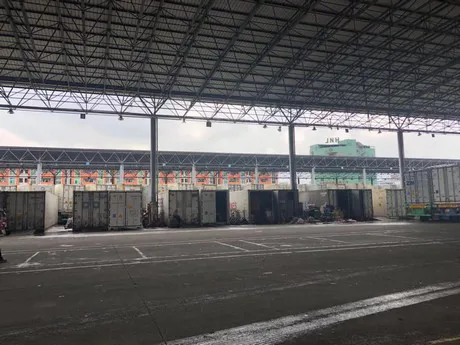Located in Guangzhou, Guangdong Province, Jiangnan Wholesale Market is one of the top five fruit and vegetable wholesale markets in China. Covering an area of about 400,000 square meters, the market opened its doors in 1994 and handles nearly a thousand types of vegetables and fruit. In recent years, the trading volume of the market has consistently ranked No.1 in China.
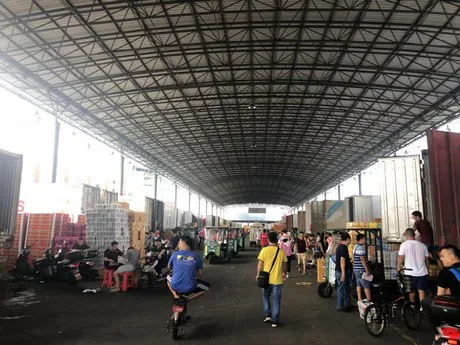
The Jiangnan Vegetable and Fruit Wholesale Market is divided into two major departments, the department for local goods and the department for imports.
The department for imports has A/B/C three zones. Zone A mainly handles the wholesale business of tropical fruits such as durians, longan fruit, and mangosteens imported from Southeast Asia (goods from the east). Zone B mainly takes care of the wholesale business of imports from Europe, America, South America, and other Asian countries including grapes, citrus, apples, and other fruit (goods from the west). In the summer, Zone C mainly deals with dragon fruit from Southeast Asia in the morning and goods from the west from 9:30 am. In the winter, this zone mainly handles cherries.
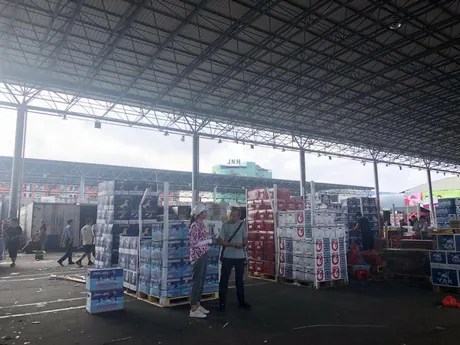
Traders in Zone A have their own containers, while most of those used by traders in Zone B are leased with delivery dates. The shelf fee is around 4,000 yuan/container, and the cooling fee is about 350 yuan/container per day. Bananas, durians, cherries, citrus, and grapes are the five fruits with the highest trading volume throughout the year in the department for imports. Currently (in August 2019), fruits with the highest trade volumes at the market include citrus (South Africa, Australia), apples (New Zealand, Chile, South Africa), blueberries (Peru), mangosteens (Thailand), and durians (Southern Thailand).
The blueberry season has just started, durian is in the middle to late season, and the mangosteen season is nearing an end. Although bananas are the most imported fruit in China throughout the year, they are not common in the Jiangnan wholesale market, as large volumes are traded on nearby docks. In recent years, the trading volume of avocados has also been large, but due to the poor market last year, traders are generally cautious this year and have reduced imports.
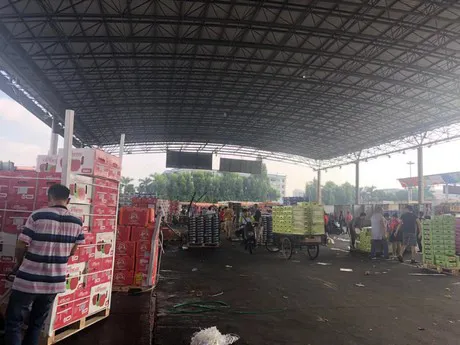
As far as trading hours are concerned, the first trading session in the department for imports at the market is 5:00-8: 30 am, mainly for small-volume cargos. The market is almost completely emptied by 9:00 am and the trucks begin to enter. The second trading session takes place from 9:30 to 11:00, mainly for large volume transactions.
Around 10:00, the market allows forklifts to enter, and wholesalers begin to transport ordered goods to the off-site transportation. In this department, a few hundred containers are opened each day. There are many different types of products in the wholesale market, but each is slightly different, either with tastes or origins. Sellers compete fairly and buyers purchase what is needed.
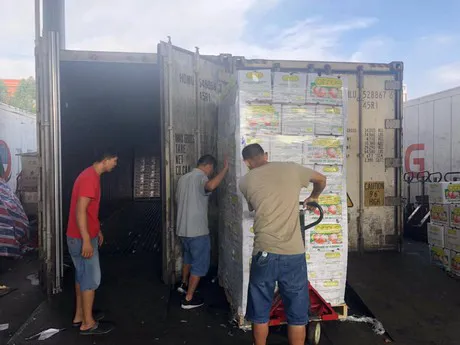
There are also different payment methods and cycles available. Many of the customers are old customers who have made multiple purchases, who enjoy payment cycles of up to several months. For new customers, most of the stalls require them to pay cash or by card.
Many sellers also have offices in the wholesale park. With the improvement of e-commerce platforms, more and more sellers not only have stalls in the wholesale market but also conduct online wholesale and retail activities in the office, and the online trading volume has been increasing year by year. However, traders generally believe that the traditional trading model of the wholesale market is still the mainstream and will not be completely replaced by e-commerce trading anytime soon.
